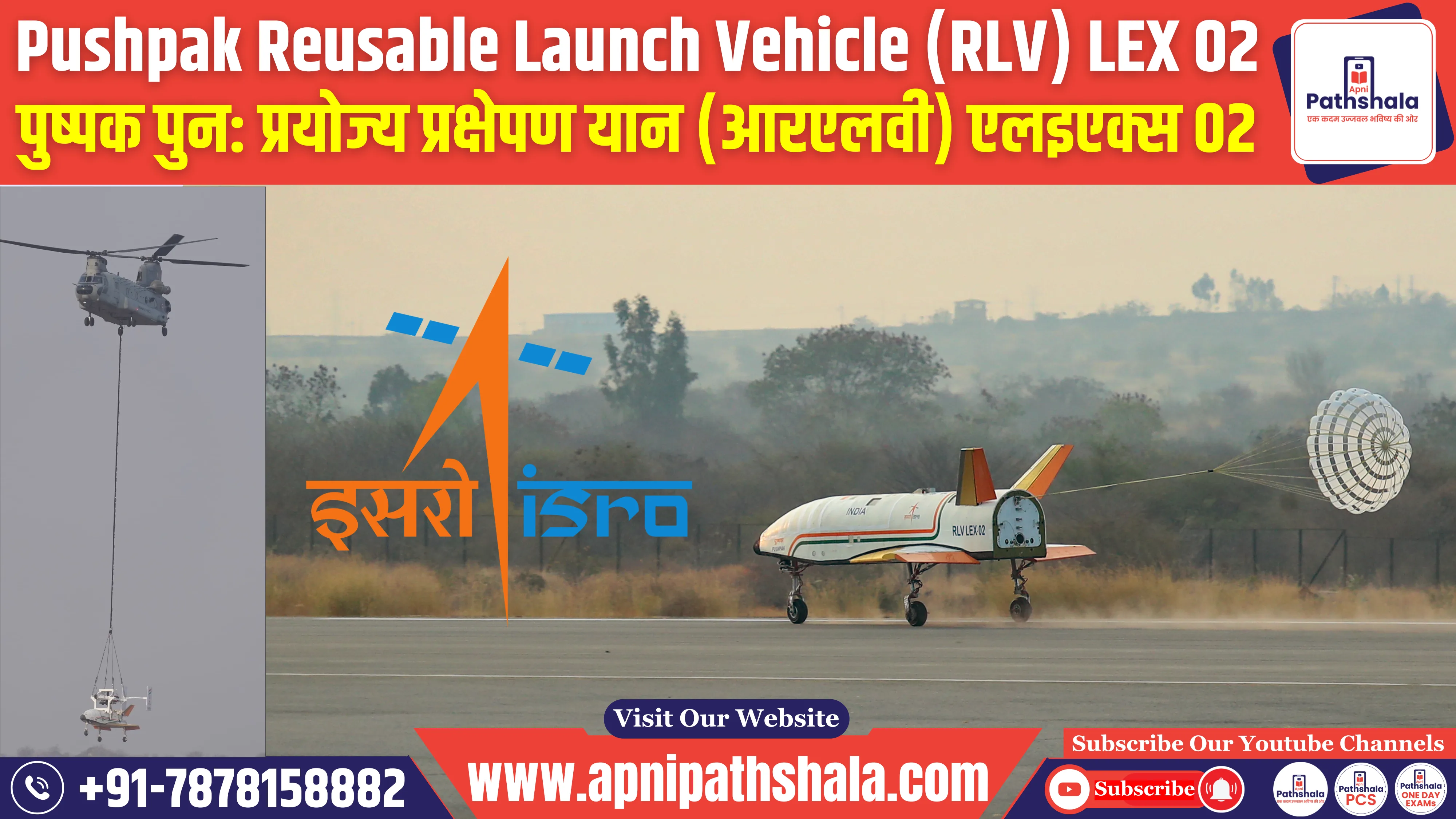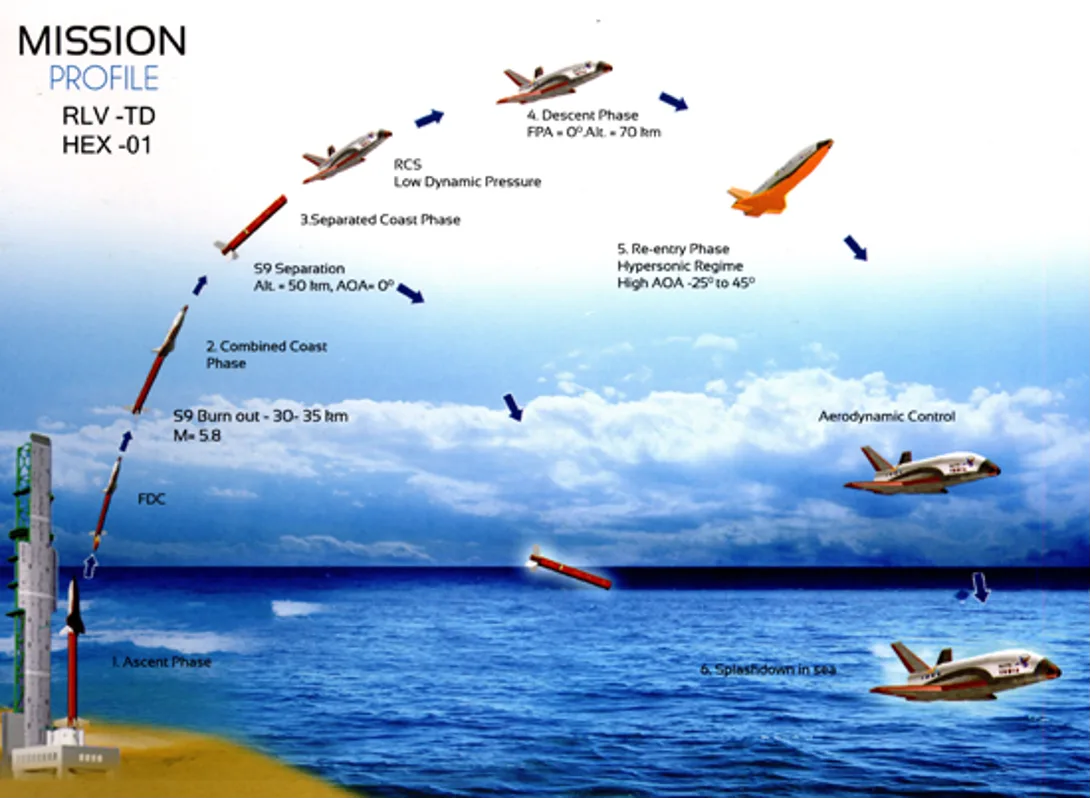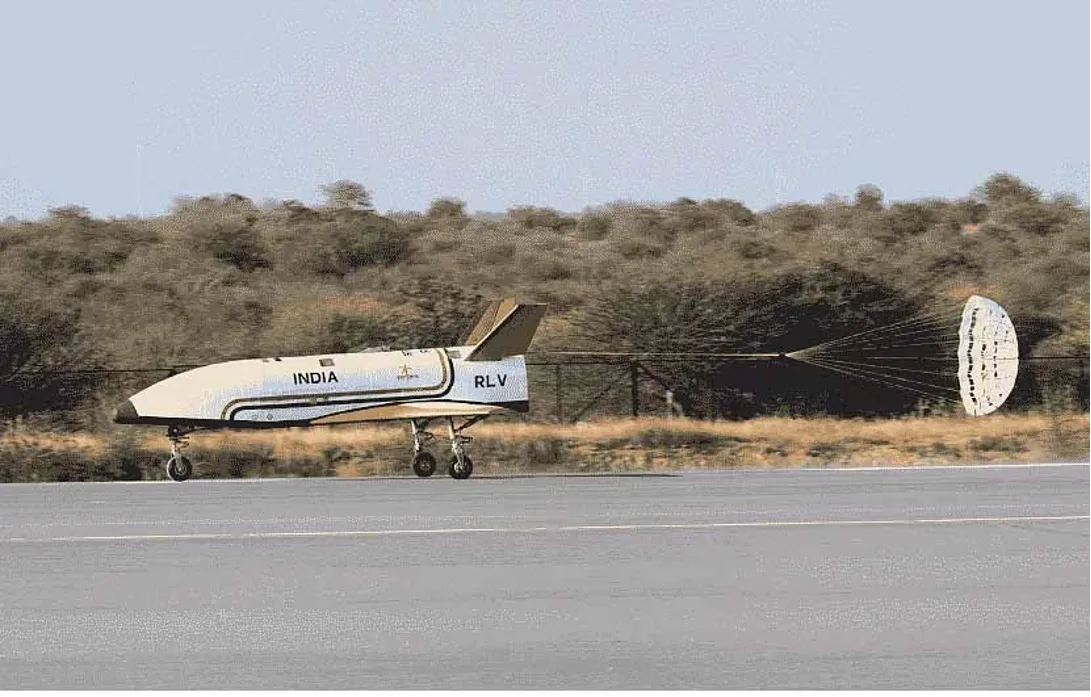The Indian Space Research Organization (ISRO) successfully performed the landing test of the Reusable Launch Vehicle (RLV LEX-02) on March 22, 2024 in Chitradurga, Karnataka.
This indigenous space shuttle has been named Pushpak. The successful landing of Pushpak took place at 7.10 am. Earlier, landing experiments of RLV have been done in 2016 and 2023. This time the Pushpak Vimana is about 1.6 times larger than the previous RLV-TD.
An Indian Air Force Chinook helicopter named Pushpak (RLV LEX-02) lifted the vehicle from the Aeronautical Test Range in Chitradurga, Karnataka and released it from a height of 4.5 km.
What is Reusable Launch Vehicle (Pushpak RLV)
The Reusable Launch Vehicle (RLV) is a sustainable launching vehicle that is being developed globally. The objective of the RLV is to reduce launch costs by increasingreusability and reliability. It can be considered as the space equivalent of a plane that takes off vertically and then glides back down to Earth. In their idealised version, RLVs have been imagined as a single staged rocket that can take off and land successfully.
- Features: The RLV is essentially a space plane with a low lift-to-drag ratio, requiring an approach at high glide angles that necessitated a landing at high velocities of 350 kmph.
- Examples of RLVs: Many space agencies – both private and public, are developing partial and fully reusable launch vehicles.
New Shepherd: It is a reusable space vehicle of Amazon’s Blue Origin space agency that successfully undertook a suborbital flight in 2015.
SpaceX’s Falcon 9: A 54-metre-tall two-stage rocket with nine engines, is capable of transporting cargo and crew to the International Space Station (ISS).
In addition to these companies, the Japan Aerospace Exploration Agency (JAXA), European Space Agency (ESA), and ISRO have also been undertaking R&D on other aspects of reusable launch systems.
Evolution of Reusable Launch Vehicles in India
ISRO started working on the RLV technology in 2010 for a two-stage-to-orbit (TSTO) launch vehicle. In 2016, the RLV-TD underwent its first trial when it touched down at the pre-determined landing site in the Bay of Bengal, 425 km east of Sriharikota.
Stages of ISRO’s Launch Vehicles and RLV
ISRO’s launch vehicles typically have three or four stages. In three-stage rockets, the first or lowermost stage has a solid-fuel motor. The second stage has a liquid-fuel Vikas engine. The third and uppermost stage has a cryogenic engine that uses liquid oxygen and liquid hydrogen.
- RLV has two stages: When the fuel in the first stage runs out, the vehicle will exit and proceed to the second stage.
- Following this, the first stage will re-enter the atmosphere and land autonomously at a predetermined location.
- It will be ready to use after some maintenance.
- Other Agencies Using RLV or Partial RLV:
- Reusable space vehicles have been in existence for a long time with NASAspace shuttles carrying out dozens of human space flight missions.
- SpaceXhas been demonstrating partially reusable launch systems with its Falcon 9 and Falcon Heavy rockets since 2017.
- SpaceX is also working on a fully reusable launch vehicle system called Starship.
Disclaimer: The article may contain information pertaining to prior academic years; for further information, visit the exam’s “official or concerned website“.
Explore our courses: https://apnipathshala.com/courses/
Explore Our test Series: https://tests.apnipathshala.com/



























